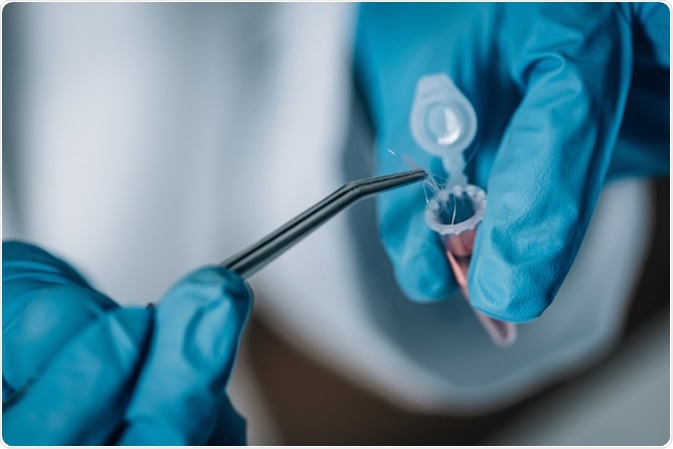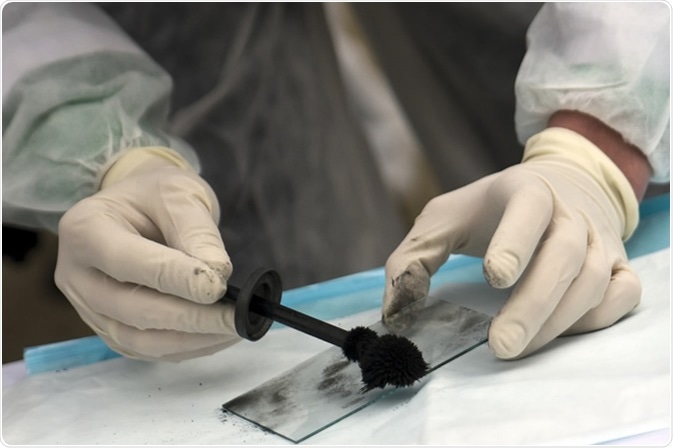Skip to:
Lifestyle profiling represents a new method where the chemistries that are obtained from the personal objects of a person are used to build their lifestyle profile. This is then used to infer the person’s location and characteristics which are further applied to various forensic investigations.

Forensic Science in Lab. Image Credit: Microgen / Shutterstock
Limitations of previous forensic methods
Conventionally, the items that are investigated in a crime scene include DNA and fingerprints which are used to identify a suspect. However, DNA analysis is often limited in cases where the samples have degraded or only trace amounts are present, or the samples are such that DNA cannot be extracted easily.
Similarly, fingerprints are also considered a powerful method for forensic investigations, but in instances of partial prints or overlapping footprints, or in the presence of different fabrics or rough surfaces, it may be difficult to analyze the fingerprint appropriately. Also, even in cases where fingerprints can be obtained, they may not be useful if the person is not present in the database. Thus, other methods are being devised to locate individuals based on the information present in a crime scene.

Forensic fingerprint analysis. Image Credit: Alexandru-Radu Borzea / Shutterstock
Personal belongings
In case personal belongings (such as pens, keys, handbags, phones, etc) found at the crime scene, chemicals present in the skin traces can be recovered. This is then further used to understand the personal routine of an individual. For example, the presence of a certain kind of medication can reveal the type of individual and narrow down the suspect pool.
Inferring the location from lifestyle profiling
Recent studies show that the outermost layer of the skin can be influenced by the environment we are surrounded by. For example, the daily routine based on our surroundings can leave traces of certain chemical types on the skin surface. The chemicals associated with the skin are also associated with diet, exercise, clothes, medications, external skin products, etc.
Therefore, based on the type of chemicals detected, assumptions can be made on the environment and lifestyle of the person. This can also be used to predict the kind of environment and, thus, the prospective location of a person.
Presence of illicit drugs
Presence of specific drugs can also indicate plenty of specificities about the lifestyle of a person. For example, the presence of chemical signatures of illicit drugs or explosives can describe the lifestyle of an unknown person. This can also reveal the personal habits of a person which may prove instrumental in detecting them.
Mobile phones as a way to infer lifestyle
Phones provide a wide range of information, ranging from personal health, environmental exposures, interests, as well as the presence of chemical molecules. In this method, rather than the metabolic signature, an attempt is made to identify the person based on personal objects, chemistry and lifestyle choices.
One study was conducted to appraise the lifestyle profiles of individuals based on their cell phones. It was found that distinct chemicals were present on phones and hands, and this was detected even after four months.
Hair, fingernails and fingerprints
In another study, hair fiber analysis was used to analyze the lifestyle of an individual. The study found that chemical analysis of hair could provide information about an individual's age, sex, body mass, exercise habits, and diet. This information could be crucial to detect a person during a criminal investigation.
By using new technology, the researchers could detect drugs, blood, alcohol, lubricants and similar items from the fingerprints of an individual. These parameters are of critical importance during a criminal investigation and can help narrow down the search process.
Further Reading